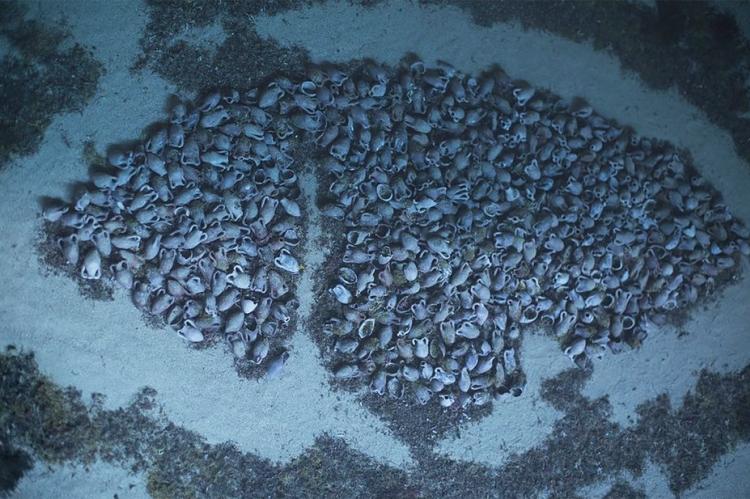Massive Roman shipwreck discovered in Mediterranean
2,000-year-old Roman vessel heavily laden with amphorae
Greek archaeologists have discovered the remains of a massive Roman vessel believed to be the largest classical shipwreck found in the eastern Mediterranean. Believed to have sunk some 2,000 years ago, the 35-metre vessel was discovered at a depth of around 60m during a survey off Kefalonia, one of the Ionian islands off Greece’s west coast. The site is situated 1.5 miles from the entrance to the harbour of Fiscardo, the island's only village to not be destroyed during World War II.
The finding was made by a 10-member team from Greece’s University of Patras during surveys conducted between 2013-2014 and is the fourth Roman wreck to be found in the area. Dated to between 100 BCE and 100 CE, it is more than double the length of the average vessel of the time. Especially notable is its cargo of 6,000 terracotta pots known as amphorae, used during the Roman Empire for transporting wine and olive oil.
Difficult to Discern
Roman-era shipwrecks are difficult to discern with sonar, as they are often concealed by natural features. High resolution sonar images revealed the mass of jugs on the sea floor, filling out the shape of the wooden ship frame. The scientists confirmed the amphorae appeared to be in a "good state of preservation" and the site itself could yield a wealth of information about the shipping routes, trading, amphorae hull stowage and ship construction between the 1st century BC and 1st century AD.
According to team member George Ferentinos, the next step is to recover an amphora and utilize DNA techniques to determine its contents, which could possibly be wine, olive oil, nuts, wheat or barley. However, he cautioned retrieval attempts would be a "very difficult and costly job." Archaeologists are concerned that scavengers and tourists may ruin the pristine site and are seeking an investor to plan a diving park for the wreck. Study findings were published in the January 2020 edition of the Journal of Archaeological Science.





























